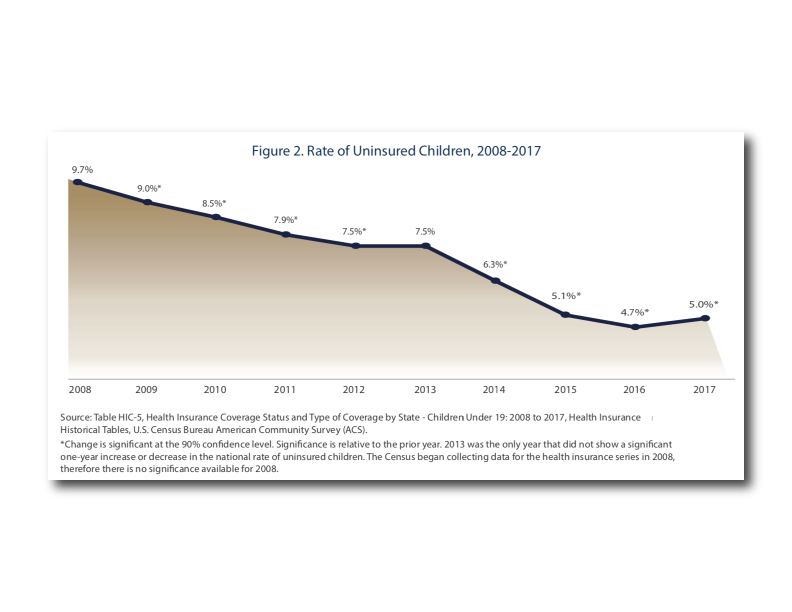Ohio
-
Voices from Ohio: The Harm of Medicaid Work Requirements
As Congress considers imposing a mandatory work reporting requirement (WRR) on adults in Medicaid as part of their drive to impose large federal cuts to Medicaid, Ohio is the first state during the second Trump Administration to request Section 1115 demonstration authority to impose a WRR on its ACA Medicaid expansion group. Ohioans are speaking…
-
Medicaid’s Role in Small Towns and Rural Areas
Key Findings Background One-fifth of people in the United States live in areas that are classified as non-urban. Residents of rural areas and small towns face additional challenges accessing needed health services compared to residents of metro areas for a variety of reasons including acute provider shortages, limited connectivity, and long distances to travel to…
-
Medicaid Managed Care and Early Childhood Development: A 12-state Scan
Summary and Key Findings The first five years of a child’s life are a period of rapid growth and development. During this time, frequent check-ups are essential to monitor a child’s progress so that if a problem is identified an intervention can occur before things get worse. Medicaid, a primary source of health care coverage…
-
State Medicaid and CHIP Snapshots, 2023
The Georgetown University Center for Children and Families (CCF) and the American Academy of Pediatrics (AAP) created factsheets underscoring the importance of Medicaid in providing coverage for children in all 50 states and the District of Columbia. Sources available here. Previous snapshots can be found here (2019), here (2018) and here (2017). Check out more interactive…
-
School-Based Health Care: One Answer to Ohio Children’s Unmet Health Care Needs
By Kelly Vyzral, Senior Health Policy Associate, Children’s Defense Fund Ohio February is School-Based Health Care Awareness Month. This is a great opportunity to talk about improving access to health care for Ohio’s children. All children deserve to grow up healthy with the opportunity to thrive into adulthood. But the reality is that in many…
-
The Proper Use of Medicaid Improper Payment Rates
For the first time, CMS has posted state-specific rates of improper payments in Medicaid. This welcome exercise in transparency is a sea change in the Payment Error Rate Measurement (PERM) program, which CMS has been using since 2007 to help states improve the accuracy of their Medicaid payments. Until now, CMS has been reporting only…
-
Ohio Sees a Troubling Increase in Uninsured Children
Clevescene By: Mary Kulhman Even during a time when the economy was notably strong, Ohio lost ground in ensuring children have access to health coverage. An annual report released today by the Georgetown University Center for Children and Families reveals there were 27,000 more uninsured Ohio children in 2019 than in 2016.Kelly Vyzral, senior health…
-
New report finds fewer Ohio children have health insurance
WTOL 11 A new alarming report has Ohio health officials looking for answers after it revealed the number of children in Ohio without health insurance grew for the second year in a row. The study, conducted by Georgetown University, shows nearly 12,000 more children under the age of six without insurance in 2018, compared to…
-
Taking steps to cover children
Herald-Star It appears there are more avenues than ever for states to ensure as many children as possible are covered by health insurance. So why were nearly 12,000 fewer Ohio youngsters covered in 2018 than in 2016? … In 2016, 3.6 percent of Ohio children were not covered by health insurance, the Georgetown University Center…
-
Editorial: Prospects for long-term health in the US continue to decline
The Columbus Dispatch The health of millennials is worse than the Generation Xers that they follow; and a 40% increase in uninsured rates for the youngest Ohioans — infants to preschoolers — could have long-term consequences not only for their health but also their brain development and overall well-being. Combined, these developments raise serious questions about…
-
Providing Health Insurance for Kids
The Intelligencer It appears there are more avenues than ever for states to ensure as many children as possible are covered by health insurance. So why were nearly 12,000 fewer Ohio youngsters covered in 2018 than in 2016? … But if there are other answers — and, most likely, there are — state officials should…
-
Cause for alarm: Thousands more Ohio children have lost health insurance
The Columbus Dispatch In the Buckeye State, nearly 12,000 more infants, toddlers and preschoolers were without coverage in 2018 than two years earlier. Advocates are urging Gov. Mike DeWine’s administration to improve and promote access to the tax-funded coverage. … Ohio had 41,642 children without health coverage, an increase of nearly 12,000 in two years,…
-
Editorial: Prospects for long-term health in the US continue to decline
The Columbus Dispatch By: Editorial Board For a state and nation already on notice that our long-term health is deteriorating, news at the beginning of this week sounded disturbing wakeup calls. The health of millennials is worse than the Generation Xers that they follow; and a 40% increase in uninsured rates for the youngest Ohioans —…
-
Providing Health Insurance for Kids
The Intelligencer By: Editorial Board It appears there are more avenues than ever for states to ensure as many children as possible are covered by health insurance. So why were nearly 12,000 fewer Ohio youngsters covered in 2018 than in 2016? In 2016, 3.6% of Ohio children were not covered by health insurance, the Georgetown…
-
Cause for alarm: Thousands more Ohio children have lost health insurance
The Columbus Dispatch By: Cathy Candisky In the Buckeye State, nearly 12,000 more infants, toddlers and preschoolers were without coverage in 2018 than two years earlier. Advocates are urging Gov. Mike DeWine’s administration to improve and promote access to the tax-funded coverage… In the Buckeye State, nearly 12,000 more infants, toddlers and preschoolers were without…
-
Rate of uninsured Ohio children nearly doubled in two years
WCPO Cincinnati By: Mariel Carbone More than 41,000 kids under the age of six are uninsured in the state of Ohio, and that number has been increasing over the last two years… “If you don’t access the necessary healthcare, it could impact them for a lifetime,” said Angela Robinson, outreach and enrollment manager with the…
-
Groundwork Ohio Seeks to Improve Managed Care Procurement to Advance a Vision for Young Children
When Governor DeWine took office in January of 2019, we began to see the platforms he campaigned upon, including his Opportunity for Every Ohio Kid agenda, begin to take form as his administration settled in and our state FY20-21 budget deliberations ensued in March. Among the new administration’s varied priorities, immediate attention was placed on…
-
2016 Maps
The interactive maps and data for 2016 provide information on the percent of adults and children covered by Medicaid and/or CHIP.You can embed these maps on your website by selecting a state on the left then copying the embed code on the right side of the map and pasting it into a post on your…
-
Nation’s Progress on Children’s Health Coverage Reverses Course
Introduction For the first time since comparable data was first collected in 2008, the nation’s steady progress in reducing the number of children without health insurance reversed course. The number of uninsured children under age 19[note] This report examines children under age 19 because of changes to the health insurance age categories in the 2017…
-
Analysis of Ohio’s report on Medicaid expansion
On Tuesday, August 21, the Ohio Department of Medicaid (ODM) released the second “assessment” of the Medicaid expansion as a follow-up to the first, General Assembly required, assessment from 2016. In this document the ODM found the following: EMPLOYMENT Employment for enrollees went up 15%, meaning 1 in 2 expansion enrollees are working The most common reason for…









